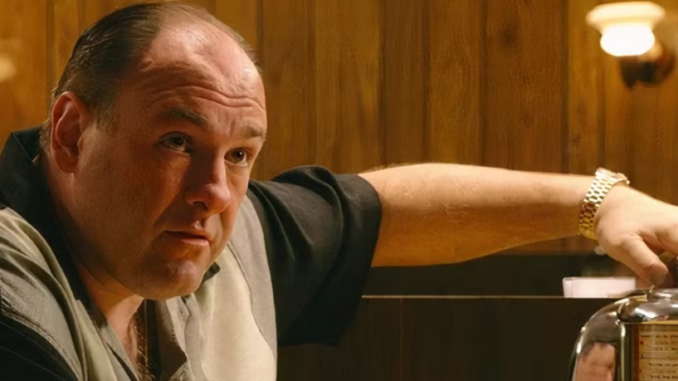
The Sopranos’ Controversial Finale Was Much Simpler Than Fans Thought One of the most controversial and wonderful endings in television history is the final moments of The Sopranos. Even after all these years, audiences still discuss what happened at the end of the famous dinner scene, which left many surprised with the controversial black cut. Fans have been constantly trying to decipher what might have happened to Tony Soprano in the seconds following that black cut. Theories range from Tony being killed to Meadow being murdered in front of him. While each theory is interesting to ponder, the beauty of David Chase’s ambiguous conclusion is that it leaves the ending open to multiple interpretations. However, some believe that the scene uses cinematic language to express what happens without actually happening. This seems most fitting, as David Chase and the creators involved with The Sopranos often used filmmaking and writing techniques to evoke a variety of meanings throughout the series. Whether through editing, thematic parallels, symbolism, or shot composition, The Sopranos has always been one of the greatest pieces of cinematic art ever seen on screen. The truth is, what actually happened in The Sopranos’ ending is much more explicit than fans realize, and it may have something to do with David Chase’s intentions.
Arguments for Tony’s Death Being Justifiable If there’s one argument that stands out most when discussing The Sopranos’ ending, it’s that Tony Soprano was killed in that final scene and the audience didn’t know. While many fans believe this to be true, David Chase himself has confirmed that this is a possibility. With that, Chase only implied that it was a possibility without ever actually saying that it happened. Furthermore, the cast and crew of The Sopranos have had similar opinions. Michael Imperioli, who played Christopher Moltisanti, stated on his podcast “Talking Sopranos” that he himself has changed his mind about how he thought the ending of the show would go, believing at one point in his life that Tony Soprano was dead. The ending continues to confuse many and has sparked countless interpretations from fans and viewers.
On one hand, the use of various shots and edits throughout the final scene could allude to Tony’s death. This scene, for example, is a masterclass in tension and how it is used in film. Various shots show Tony looking up and down, waiting for his family to arrive. One by one, they arrive, however, Meadow takes the longest. Her delay is used immediately as a way to create tension because one of Tony’s family members has not arrived yet. To do this, Meadow struggles to park her car when she finally arrives, and her struggle is interrupted by several shots of other people inside the diner. Along with Meadow’s role in this scene, there are multiple shots of other people in the diner slowly starting to move in or surround where Tony is sitting. The cuts between Tony’s faces, the other customers, and Meadow’s parking lot create tension that is supposed to be building towards something. One of the customers is shown as potentially being the one to kill Tony, from the perspective of the story, as he is wearing a “members only” jacket and constantly looking towards Tony. This jacket has been seen worn by thugs in other episodes of the show. Furthermore, Tony was recently involved in a gang war with a Mafia family in New York, so it is not impossible that he was killed.
The language of the film also alludes to Tony’s death, as many of the shots shown from inside the diner are technically Tony Soprano’s POV shots. Every shot of Tony’s face is shot backwards from his POV. When the bell rings and people walk in, it is from Tony’s POV the entire time. This implies that Tony would be looking at the door every time the bell rings, and the audience would see what he sees. Thus, when Meadow Sopranos is the one who walks through the door, instead of a reverse shot showing her, the next shot the audience sees is a cut to black. This could imply that, since the next shot is supposedly from his POV, the audience is seeing what Tony is seeing at that moment. If he was shot at that moment, then black would be the only logical next shot. Tony Soprano’s death remains an interesting theory about how The Sopranos ended, as there are many reasons to believe it. However, it’s actually just one piece of a larger puzzle.
There was never anything unintentional about David Chase’s approach to The Sopranos. The show was originally conceived as a portrait of an Italian-American boy who goes to therapy to work through issues stemming from his poor relationship with his mother. It was intended to be a reflection of David’s own relationship
